Where the Floorplan Never Ended
People used to say you could get lost in Del Amo Fashion Center without trying. That wasn't a joke - it was a Saturday. Built up piece by piece from 1959 through the early 1980s, this was a mall that didn't begin all at once. It fused over time, expanding across parking lots, walkways, and decades of suburban growth.
By 1981, after joining its once-competing halves over Carson Street, Del Amo became the largest indoor shopping mall in the United States.
Today, it's still massive, still layered with retail, and still on the list of things to do in Los Angeles, California.
Property Scale and Commercial Specs
Del Amo Fashion Center covers 2,519,600 square feet.
That number matters because, in square footage rankings, this places it seventh in the country.
Simon Property Group, which acquired management control in 2007, holds a 50% ownership stake.
The rest is split evenly between JPMorgan Fleming Funds and Farallon Capital Management.
There are about 275 stores on site. Nine anchor locations were built into the layout - seven remain occupied.
Those include JCPenney, Nordstrom, Dick's Sporting Goods, AMC Del Amo 18, Macy's Men's and Home, and Macy's Women's.
Three floors connect the interior mall, although Macy's North includes a fourth.
On-site parking accommodates 12,000 vehicles.
Jo-Ann Fabrics, which occupied the ground level of the old Macy's Home building, is scheduled to close.
The announcement came on February 25, 2025, during the chain's nationwide shutdown.
The space was last renovated between early 2019 and mid-2020 after Dick's took over the floors above.
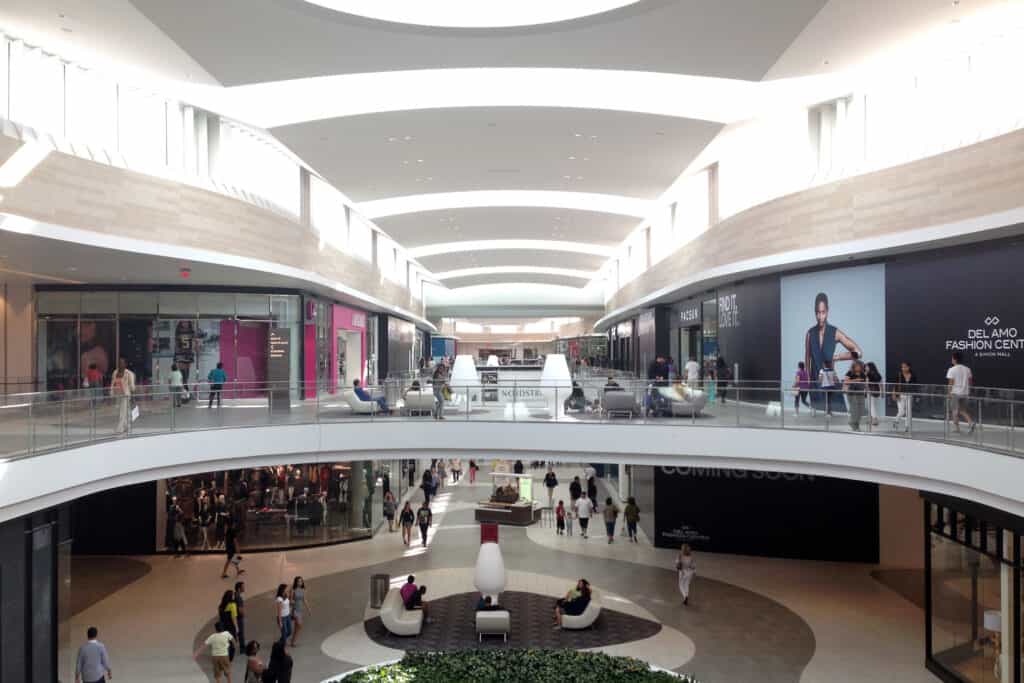
Retail Construction Starts and Anchor Expansion
The mall didn't start as one project. It came together over time, built out of two major developments on opposite sides of Carson Street.
The first piece arrived on February 16, 1959, when The Broadway opened a department store at Hawthorne and Sepulveda.
The rest of the open-air Del Amo Shopping Center followed over the next two years.
By March 16, 1961, anchors like JCPenney, Sears, and Woolworth's were in place, joined by smaller tenants such as Silverwoods, Lerner's, and Leed's Shoes.
Just five years later, Bullock's opened its Fashion Square across the street in 1966.
That name didn't originally connect to Del Amo - early advertising kept it separate.
I. Magnin opened in March 1967, and Desmond's joined the mix shortly after.
Ownership shifted in 1970 when Transwest Management sold the Torrance Fashion Square to Great Lakes and Guilford Glazer and Associates.
The combined center was rebranded as Del Amo Fashion Square in 1971.
A new Montgomery Ward, covering 177,000 square feet, came with the name change.
That same year, Ohrbach's and a larger I. Magnin joined the roster, along with a United Artists fourplex that eventually added two more auditoriums.
Mergers, Linkages, and Peak Retail Footprint
Del Amo Fashion Center didn't earn its oversized reputation from one building spree.
It reached it by bridging gaps.
In November 1981, the center formally connected its two previously independent halves with a concourse built over Carson Street.
A new J. W. Robinson's store anchored the north end of that expansion, giving the center both physical unity and its longest continuous shopping route to date.
The update brought more than just square footage.
The so-called "marriage of the malls" also added a food court labeled the International Food Court and an early computerized customer help system.
That year, Del Amo became the largest indoor shopping mall in the United States.
What followed was retail rotation on a large scale.
Ohrbach's closed in 1987 and was replaced by STØR, a furniture store.
In 1991, the original United Artists theater shut down, and a Mann 9-screen theater opened outside the main complex.
STØR folded in the early 1990s, and its space was split between Marshalls and TJ Maxx.
I. Magnin shuttered in 1989. Burlington Coat Factory took over the basement space from the older Del Amo Center.
J. W. Robinson's was rebranded as Robinsons-May in 1993.
Changes kept piling up, but the square footage held steady until the early 2000s.
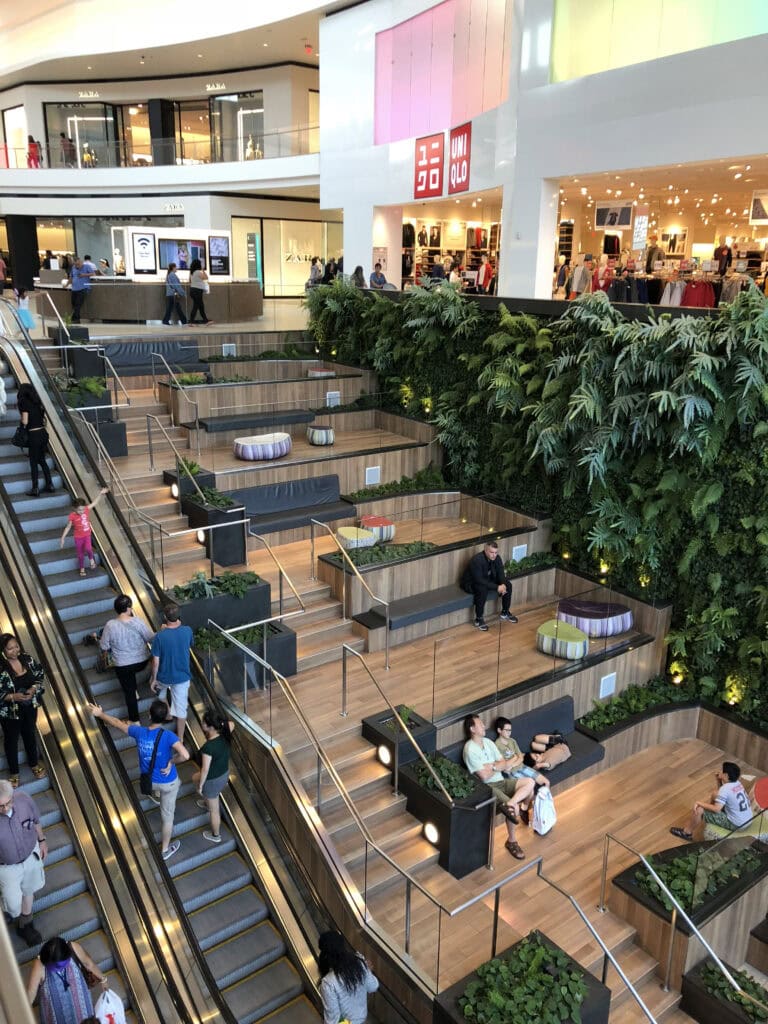
Retail Saturation, Tenant Loss, and Market Pressure
By the late 1990s, Del Amo wasn't gaining ground. It was holding it, but only barely.
The department store mergers of the 1990s reshuffled the layout again.
Bullock's turned into a Macy's Apparel store in 1996.
The old Macy's building, once home to The Broadway, shut down.
A sale to Bloomingdale's was floated but fell through.
By July 1999, the building reopened as Macy's Home and Furniture Gallery.
That format gave it the largest stand-alone home goods Macy's in Southern California at the time.
Downstairs, Jo-Ann Fabrics moved in, taking over 50,000 square feet.
That decision aged well through the 2000s but hit a wall with the February 2025 announcement that all stores would close nationwide.
In parallel, the retail loss was already underway.
The Mann Theater closed in 2000, ending any hope of maintaining a multiplex anchor on the property.
LA Fitness took over that footprint. The dual bankruptcy of Montgomery Ward and Woolworth's cut out two more anchors.
Their closures, along with rising retail vacancies in neighboring malls, exposed how fragmented the Los Angeles retail scene had become.
That same year, a two-level Barnes & Noble opened on the mall perimeter, one of the few new additions that hadn't been cut from old space.
Ownership Turnover and Real Estate Redevelopment
The 2002 sale of Del Amo by Guilford Glazer's family to The Mills Corporation brought a new ownership era.
The purchase closed at $420 million. Soon after, Mills sold half the interest to funds managed by JPMorgan Fleming.
In 2005, Mills announced a $160 million redevelopment strategy targeting the mall's northeast end, where Montgomery Ward and Woolworth's had gone dark.
That plan cleared and rebuilt 670,000 square feet, then added 100,000 more.
The Macy's reshuffle hit its final phase in 2006.
Robinsons-May was converted into Macy's South, while the Macy's Apparel building became Macy's North.
A new outdoor lifestyle wing opened on September 14, 2006.
It featured a two-story Forever 21 flagship, a Lucky Strike Lanes, and an AMC 18-screen multiplex.
In 2007, Crate & Barrel opened next to the new wing.
That same year, Simon Property Group and Farallon Capital Management jointly acquired Mills.
Simon took over management of Del Amo and quickly folded the mall's online presence into the Simon.com platform, grouping it with Ontario Mills, Hilltop Mall, and others.
This phase didn't try to recreate the 1980s layout.
It stripped away the decaying portions and brought in entertainment-driven tenants that leaned on evening and weekend traffic.
Sales strategy had shifted - square footage was no longer the only metric that mattered.
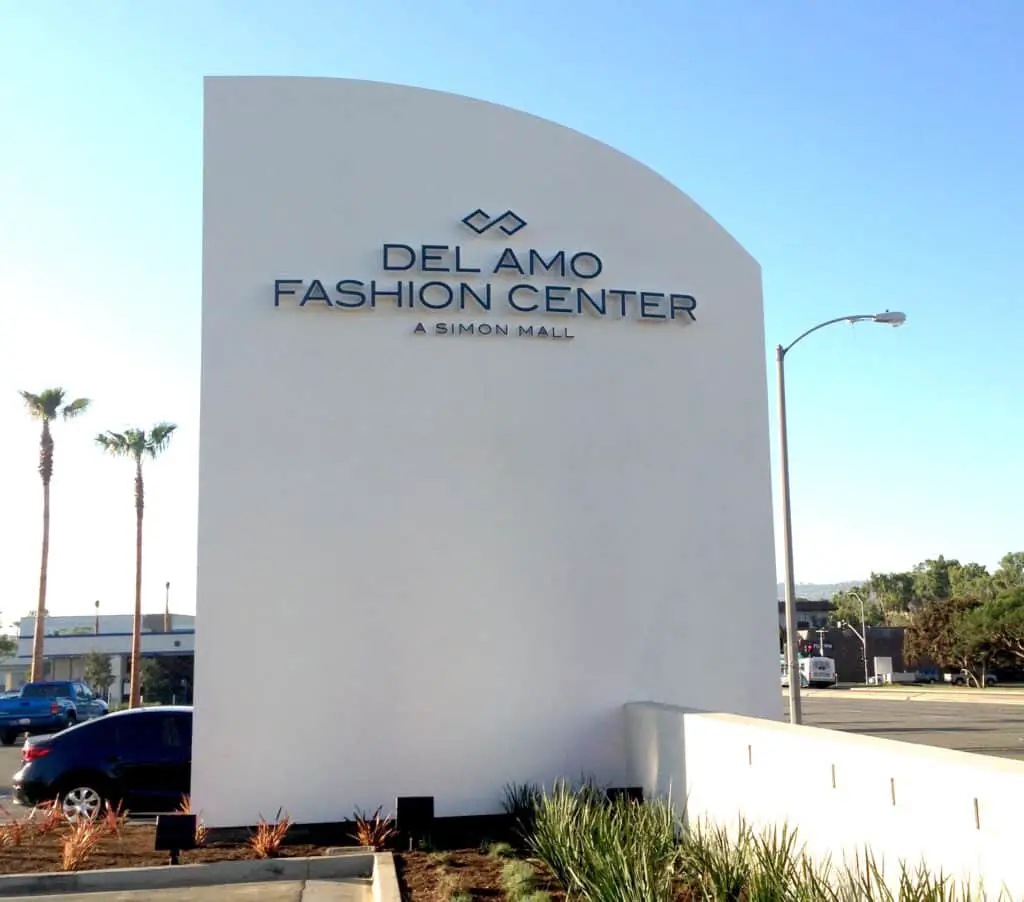
Anchor Realignment and Architectural Overhaul
After Simon Property Group increased its stake in Del Amo Fashion Center, it spent two years preparing the public for another redesign.
The first sketches came across as vague. By 2012, a full plan followed. It wasn't small.
The entire north end would be torn out and rebuilt from the ground up with input from the architecture firm 5+design.
The goal? Regain market share lost to Century City, the Irvine Spectrum, and South Coast Plaza.
A retail arms race is visible in concrete and lease terms.
In 2013, they started with the concourse above Carson Street.
The food court was fully redesigned and reopened as the Patio Cafes in the spring of 2014.
Around the same time, Macy's announced it would consolidate its three stores into two.
Macy's Home closed, and Dick's Sporting Goods prepared to move in.
On October 9, 2015, the new Fashion Wing opened.
Two stories tall, the structure used more natural light, more white space, and fewer escalators boxed in by walls.
Nordstrom moved in from the South Bay Galleria.
Tenants in the new section included Din Tai Fung, Tumi, BOSS Hugo Boss, Michael Kors, Kate Spade New York, and Brooks Brothers.
Lucille's reopened nearby. Great Maple and EMC Seafood followed, though both later closed.

Lease Activity, Closures, and Security Policy
After 2016, Del Amo Fashion Center stopped expanding and started managing what was left.
Marshalls relocated to make way for Dave & Buster's in 2018.
Outback Steakhouse, displaced during renovations, reopened in the Outdoor Village on July 7, 2018.
The Orbach's building changed hands again. After Marshalls and TJ Maxx left the space, Mitsuwa Marketplace opened in 2019 on the first floor.
The second level has remained empty since TJ Maxx left in spring 2016.
Sears closed on July 1, 2020, after Simon Property Group moved to buy the full 22.4-acre parcel for around $110 million.
The deal included the Original Sears Building, its auto shops, nearby office space, and parking lots.
That gave Simon room to propose future projects, though none have broken ground yet.
On March 1, 2024, Del Amo Fashion Center introduced a chaperone rule for weekends after 3 p.m.
Visitors under 18 now must come with someone at least 21.
The decision followed a series of large youth gatherings that raised security concerns.
🍀

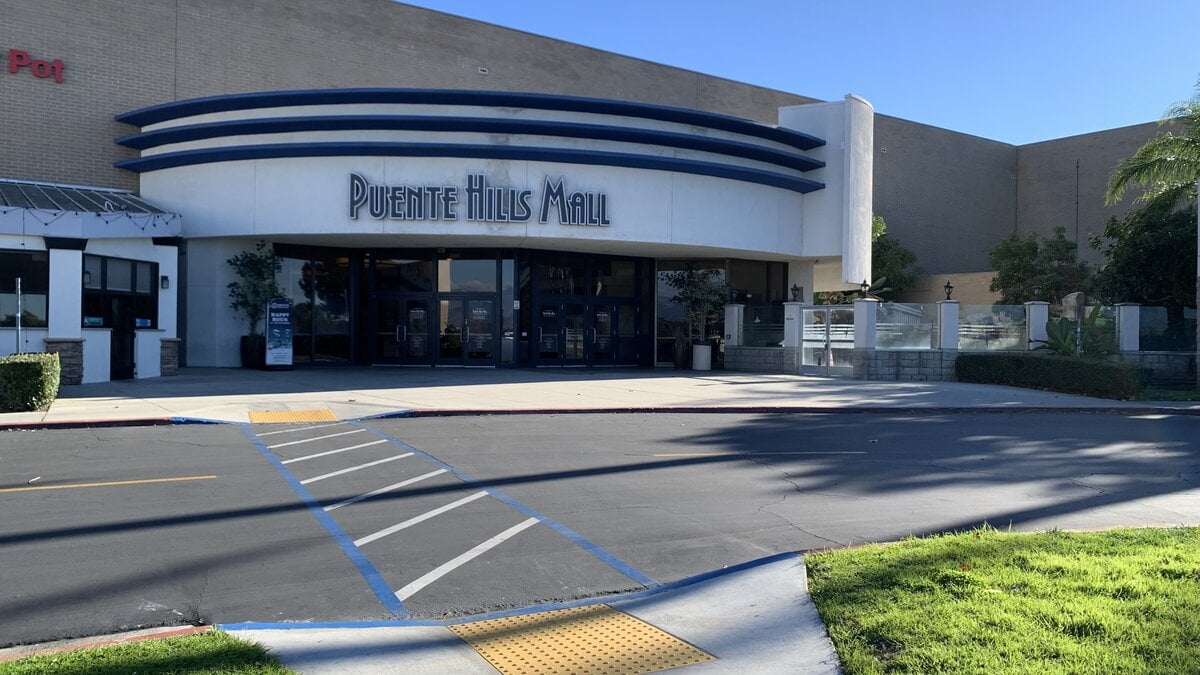
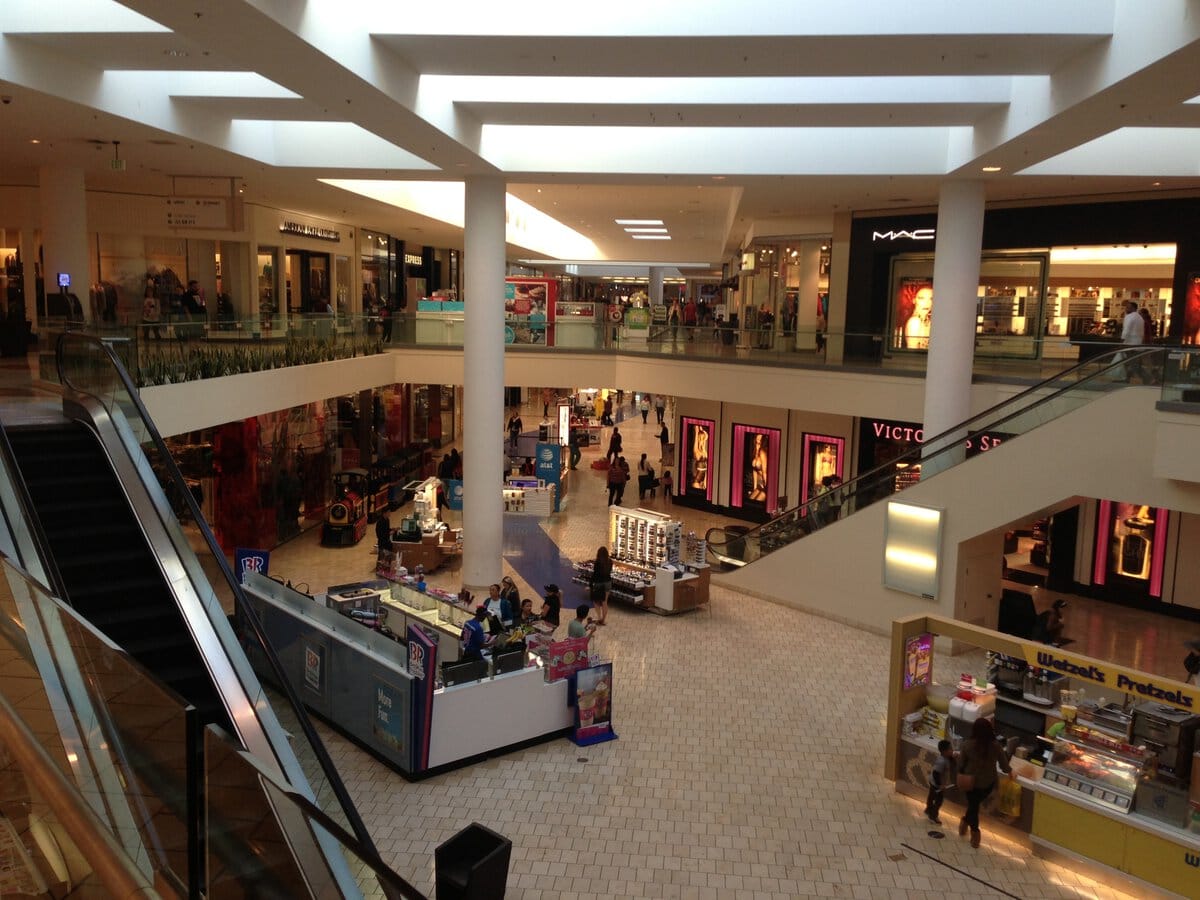
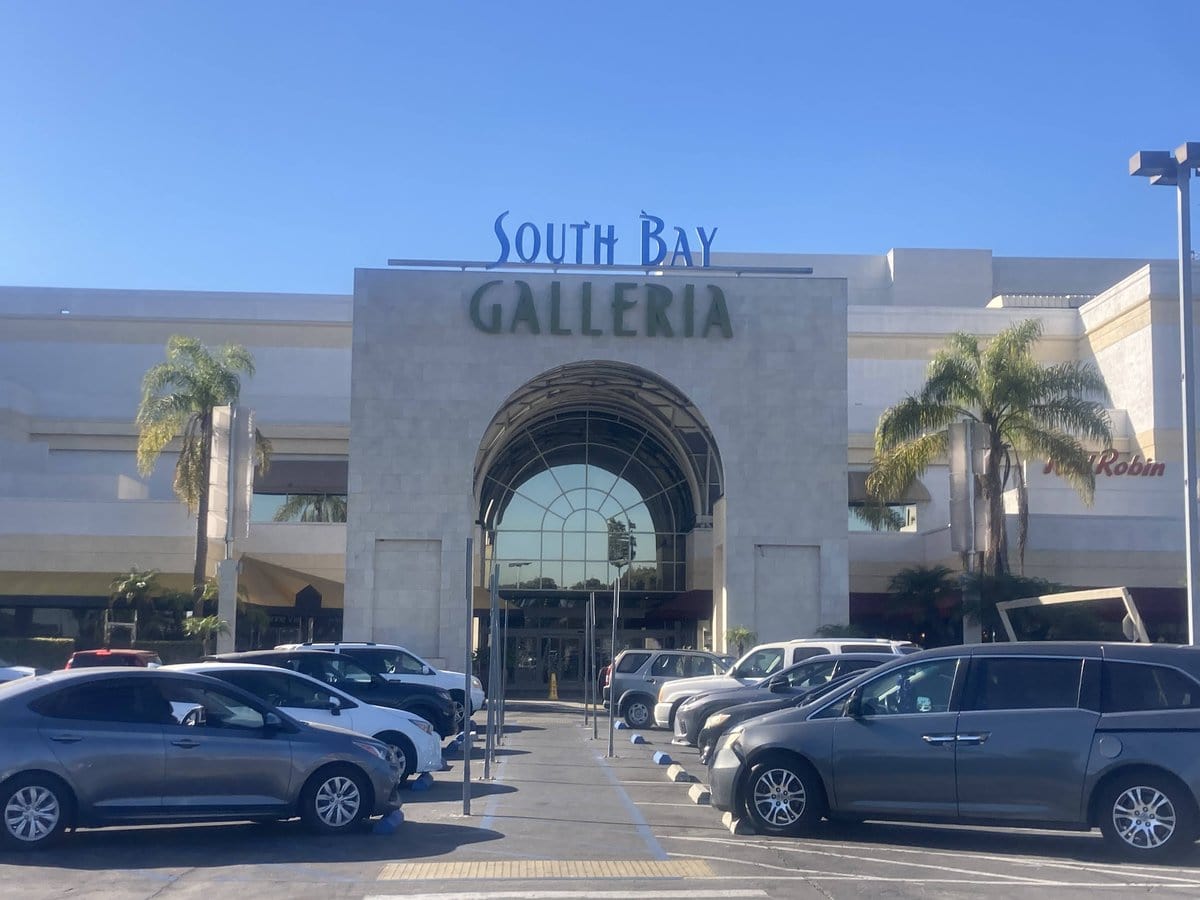


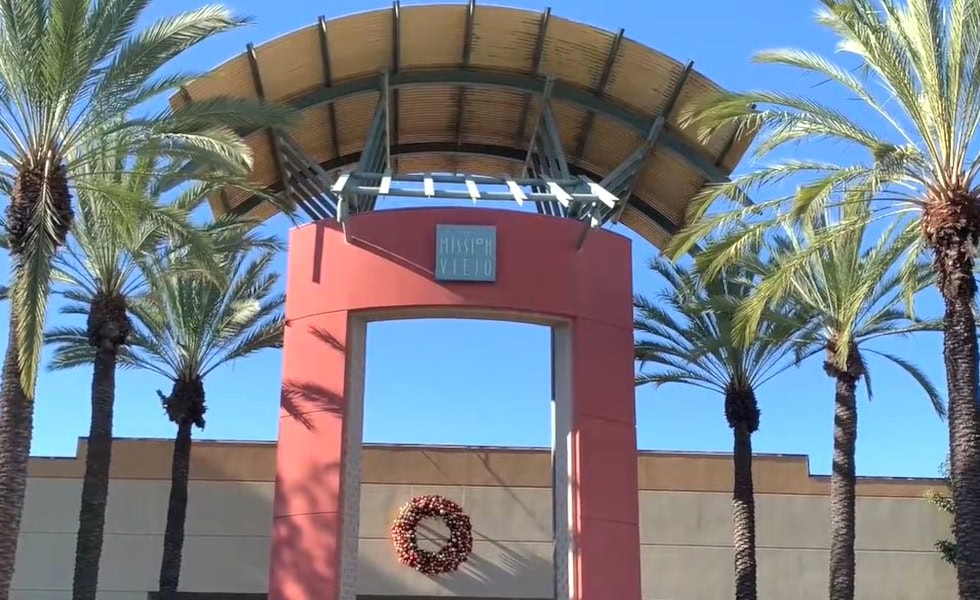
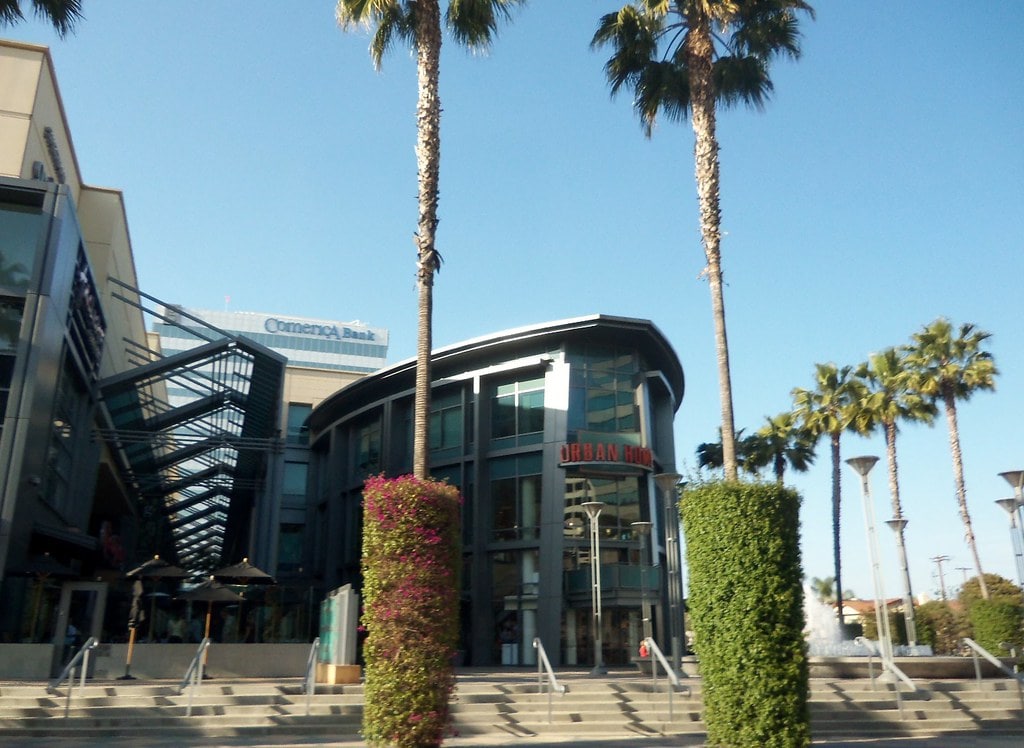

Thanks for the beautiful news about Del Amo Shopping Center. I do to the mall at least once a month.
Glad to hear Del Amo's still part of your routine. Visiting once a month says a lot about what still draws people in.
This is a very interesting story that was worth telling
Thanks for saying that. That mall carries layers, and each says something about the era that built it.
Incredible history on this historic mall. I grew up in Redondo Beach in the 80s and 90s and witnessed the growth and transformation of the two malls into one. I loved the restaurant at Bullock’s (became a Macy’s) they used to have fashion shows there during lunch. I went there with my mom. I even worked at that Robinson’s May in the men’s suits dept while in college. It was a great place to shop and work. So many great memories. Thank you for the history! And Ohrbach’s! I was just thinking about them a few days ago and wondered what had happened to them!
Thank you for this. Your story is exactly why writing about these malls still matters. They're not just buildings - they're chapters in people's lives.